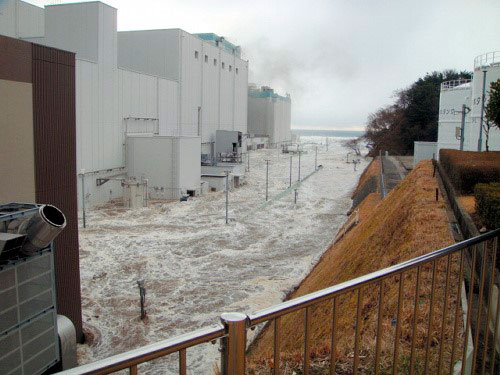Three Mile Island (USA)
This accident occurred on 28 March 1979, at Three Mile Island in Pennsylvania.
Course of the accident
- The accident started with an equipment failure which caused a loss of reactor coolant through a partly-opened safety valve.
- The operators misinterpreted the accident and switched off the properly-working emergency core cooling system.
- The loss of reactor coolant caused core melting.
- The undamaged reactor vessel contained the damaged core.
- A small amount of radioactive material escaped into the containment building.
- The accident had no radiological effects on the environment or the population.
Chernobyl (The Soviet Union / Ukraine)
On 26 April 1986, the worst nuclear accident so far occurred at the Chernobyl 4 NPP in the Ukraine.
Main causes of the accident:
- design of the reactor
- poor safety culture
Consequences of the accident
- 47 people died.
- About 4000 cases of thyroid cancer among children were diagnosed, 9 died, others were cured.
- Among around 600,000 emergency workers and residents of the most contaminated areas about 4000 deaths from radiation-induced cancer and leukemia are expected.
(This is about 3% of the spontaneous cancers not caused by Chernobyl radiation.)
- Except in the 30-kilometre exclusion area, the radiation levels are again mostly normal.
Chernobyl – Course of the accident
A “Sarcophagus” built over the ruined reactor
A new protection building will be built over the degraded Sarcophagus.
Fukushima (Japan)
On 11 March 2011, an exceptional tsunami (8 m higher than considered in the design) following a magnitude 9 earthquake flooded the Fukushima Daiichi Nuclear Power Plant (6 BWR units) and disabled the safety systems.
Scheme of the Fukushima power plant
Three reactors lost cooling, fuel overheated and produced hydrogen which exploded in the reactor building. The fuel was damaged and released radioactive materials.

Consequences of the accident
- No victims due to radiation
- 70,000 evacuated from a 20 km radius before radioactivity release
- Part of the evacuated areas is already safe for normal life
Lessons learned
- Resilience against extreme natural events was analysed in NPPs of the world (“stress tests”) and additional safety features were introduced.









